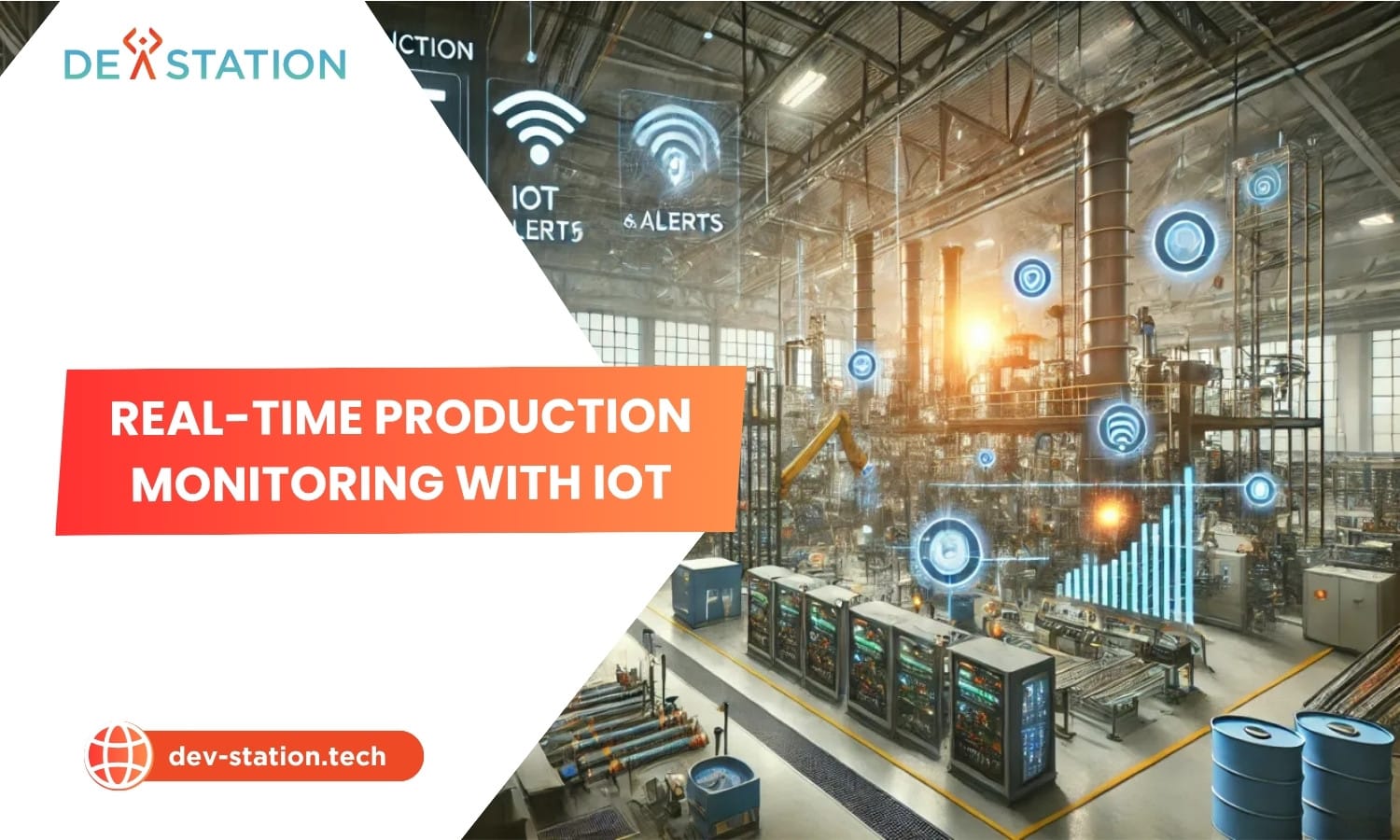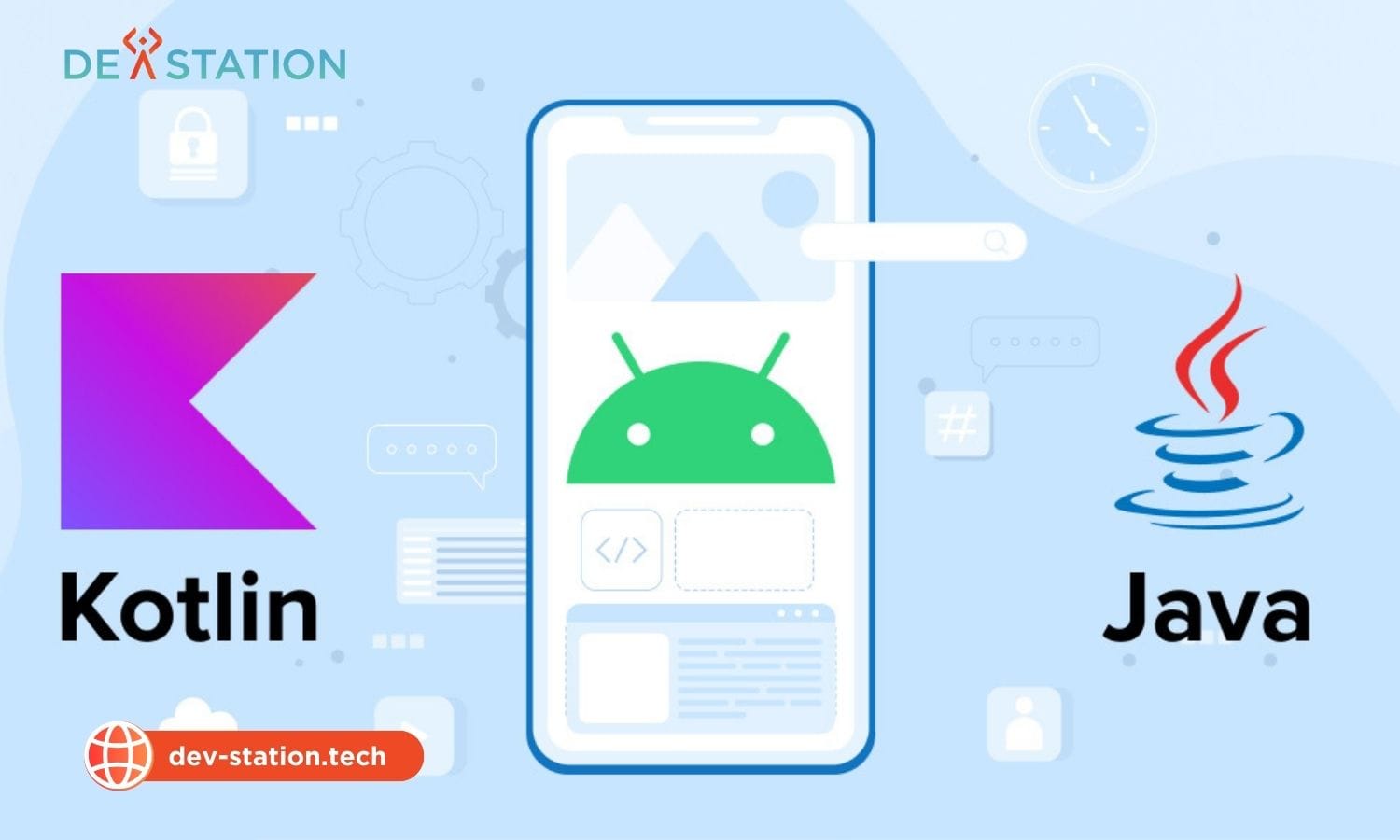Real-time production monitoring IoT solutions provide live operational visibility, helping manufacturers boost efficiency and reduce waste by transforming raw data into actionable insights. At dev-station.tech, Dev Station Technology empowers you to harness this technology, turning your factory floor into a smart, data-driven environment for peak performance and process optimization. Achieve enhanced productivity, better quality control, and streamlined manufacturing workflows.
Contents
ToggleHow Does IoT Enable Live Visibility for Real-Time Monitoring?
IoT enables live visibility by using interconnected sensors and gateways to automatically collect data directly from machinery and PLCs. This data is then transmitted to a central platform, which visualizes it through live factory dashboards and triggers instant alerts for immediate action.
The transformation from a traditional factory to a smart factory hinges on one critical element: data. In the past, manufacturers received production data in periodic reports, making it difficult to react to issues as they happened. Today, the Internet of Things (IoT) provides the level of control needed to maximize quality, efficiency, and flexibility in modern manufacturing. By embedding smart sensors into machinery and connecting them through a network, companies can capture a continuous stream of information about every aspect of their operations.
This network of devices acts as the nervous system of the factory floor. The core components of this system include:
- IoT Sensors and Actuators: These devices are the eyes and ears of the system. They measure physical parameters like temperature, vibration, pressure, and output count. Actuators can then perform actions based on the data, such as adjusting a machine setting.
- PLC and Gateway Integration: Programmable Logic Controllers (PLCs) are the ruggedized computers that control most industrial machinery. IoT gateways act as a bridge, collecting data from PLCs using protocols like Modbus or OPC UA and translating it into an internet-friendly format like MQTT. This allows legacy equipment to become part of the smart factory ecosystem.
- Cloud and Edge Computing: The massive volume of data generated is sent to a cloud platform for storage, processing, and analysis. For time-sensitive decisions, edge computing processes data locally on the factory floor, reducing latency and ensuring rapid responses even without a stable internet connection.
- Data Visualization and Alerting: The processed information is displayed on real-time dashboards accessible on computers, tablets, or large screens across the facility. These dashboards show Key Performance Indicators (KPIs) at a glance, while automated alerts notify staff via email or text when a metric deviates from its normal range, enabling proactive intervention.
Why Does Real-Time Production Monitoring Matter So Much?
Real-time monitoring is crucial because it transforms reactive problem-solving into proactive optimization. It offers immediate visibility into production health, allowing manufacturers to instantly identify bottlenecks, reduce waste, and improve quality, thereby boosting operational efficiency and cutting costs.
In a competitive landscape, agility and efficiency are paramount. Without real-time insights, manufacturers operate with a significant blind spot, often discovering problems only after substantial waste or downtime has occurred. According to a report by the Economist Intelligence Unit, 86% of manufacturing companies have significantly increased their data collection efforts to enhance analysis and productivity. The impact of embracing this visibility is profound and touches every corner of the operation.
How Does It Enhance Operational Efficiency and Performance?
It boosts efficiency by providing instant feedback that helps identify bottlenecks, optimize resource allocation, and streamline workflows. This data-driven approach moves decision-making from intuition to objective analysis, leading to higher throughput and productivity.
Live data from the factory floor allows managers to see exactly where and when slowdowns occur. By monitoring metrics like cycle time and throughput, teams can pinpoint underperforming machines or inefficient processes and take immediate corrective action. This level of insight supports a culture of continuous improvement, where small, data-informed adjustments accumulate into significant gains in overall performance. The strategic use of iot in manufacturing is the key enabler of this transformation, turning production lines into highly optimized, responsive systems.
What Is the Impact on Waste Reduction and Quality Control?
Real-time monitoring dramatically improves quality control by detecting anomalies and defects as they happen. This immediate identification allows operators to halt production, fix the root cause, and prevent the creation of more faulty products, significantly reducing scrap and rework costs.
By setting quality parameters and monitoring them continuously, any deviation triggers an alert. For example, an electronics manufacturer can track soldering temperatures in real time. If a machine’s temperature falls out of the optimal range, the system can flag it instantly, preventing a whole batch of defective circuit boards. This proactive quality assurance minimizes waste and enhances customer satisfaction by ensuring product consistency. This is a core benefit of adopting an industrial iot in manufacturing strategy.
What Key Performance Indicators Should You Track with IoT?
The most critical KPIs to track with IoT are Overall Equipment Effectiveness (OEE), Cycle Time, Production Yield (or First Pass Yield), Downtime, and Scrap Rate. These metrics provide a comprehensive view of production efficiency, quality, and performance.
Tracking the right KPIs is essential for turning data into actionable intelligence. While every factory has unique needs, a few universal metrics form the bedrock of effective production monitoring.
| KPI | What It Measures | Why It Matters |
|---|---|---|
| Overall Equipment Effectiveness (OEE) | The percentage of manufacturing time that is truly productive. It is a composite score of Availability, Performance, and Quality. | The gold standard for measuring manufacturing productivity. An OEE score of 85% is considered world-class. |
| Cycle Time | The total time required to produce one unit of a product from start to finish. | Helps identify production bottlenecks and inefficiencies in the workflow. |
| Yield / First Pass Yield (FPY) | The percentage of products that meet quality standards without any rework. | A direct indicator of production quality and process stability. |
| Downtime | The amount of time that equipment is not running when it is scheduled to be. This includes both planned (maintenance) and unplanned (breakdowns) stops. | A major source of lost production capacity. IoT enables a shift from reactive to predictive maintenance iot, reducing unplanned downtime by up to 50%. |
| Scrap Rate | The percentage of materials that are discarded as waste during the production process. | Directly impacts material costs and profitability. Real-time alerts can prevent issues that lead to scrap. |
Advanced systems even enable innovative techniques like ai vision quality control manufacturing, where connected cameras automatically detect surface flaws or misalignments, further refining quality metrics.
How Can You Integrate IoT Monitoring with MES and ERP Systems?
IoT data is integrated with Manufacturing Execution Systems (MES) and Enterprise Resource Planning (ERP) systems via middleware or direct API connections. This integration enriches operational data from IoT with business context from the ERP, creating a unified view of the entire enterprise.
While IoT provides raw data from the shop floor, its true power is unlocked when combined with business-level systems. MES manages and monitors work-in-progress on the factory floor, while ERP systems handle broader business functions like finance, inventory, and human resources.
Integrating these systems creates a seamless flow of information:
- Contextualized Data: The ERP sends a production order to the MES. The MES knows that 1,000 units of Product X need to be made.
- Real-Time Execution: The MES directs the machinery, and IoT sensors begin tracking production. The IoT data (e.g., units produced, machine speed, temperature) is fed back to the MES in real time.
- Unified Visibility: The MES sends status updates back to the ERP. Now, the finance department can see the real-time cost of production, and the sales team has an accurate estimate of when the order will be ready. This level of iot supply chain visibility manufacturing extends from the machine level to the customer.
This integration breaks down the traditional silos between the operational technology (OT) on the factory floor and the information technology (IT) in the back office. The result is an enterprise that can make faster, more informed decisions grounded in real-time conditions. It also enables advanced concepts like the digital twin in manufacturing, where a virtual model of the production process is continuously updated with live IoT data.
What Are the Steps to Implement IoT Monitoring and Measure ROI?
Implementation involves a phased approach: start with a small pilot project to prove value, identify key bottlenecks, select the right technology, and then scale across the facility. Return on Investment (ROI) is measured by calculating the gains (e.g., cost savings from reduced downtime) against the total investment costs.
Successfully implementing an IoT monitoring solution requires a strategic, step-by-step approach. Rushing into a full-scale deployment without a clear plan can lead to challenges. Dev Station Technology recommends the following framework for a successful implementation.
How Do You Implement the Solution?
A successful implementation follows four main steps: Audit and Goal Setting, Pilot Project (Proof of Concept), Technology Selection, and Scaled Deployment.
- Step 1: Audit and Identify Bottlenecks. Before investing in technology, understand your biggest pain points. Is it machine downtime? High scrap rates? Inefficient energy use? Establish baseline metrics for these areas.
- Step 2: Start with a Pilot Project. Choose one critical machine or a single production line for a proof-of-concept (PoC). The goal is to demonstrate the value of IoT on a small, manageable scale before committing to a larger investment.
- Step 3: Select the Right Technology. Based on your pilot, choose the appropriate sensors, gateways, and IoT platform. The solution should be scalable, secure, and capable of integrating with your existing systems.
- Step 4: Scale the Implementation. After a successful pilot, use the lessons learned to expand the solution to other machines and production areas. This phased approach minimizes risk and ensures smoother adoption across the factory.
How Do You Calculate the Return on Investment (ROI)?
ROI is calculated with the formula: ROI = [(Financial Gain – Investment Cost) / Investment Cost] x 100. Financial gains include savings from reduced downtime, lower energy costs, and decreased material waste, while costs include hardware, software, and implementation services.
Measuring ROI is critical for justifying the investment and securing stakeholder support. To calculate it accurately:
- Estimate Total Investment Cost: This includes all one-time and recurring costs: hardware (sensors, gateways), software platform licenses, implementation and integration services, and ongoing maintenance.
- Quantify Financial Gains: Measure the improvements against your initial baseline. For example:
– Downtime Reduction: If unplanned downtime cost you $50,000 per month and your IoT solution reduces it by 30%, your monthly gain is $15,000.
– Energy Savings: Studies show that iot energy management manufacturing solutions can reduce costs by up to 15%. If your monthly bill is $20,000, your gain is $3,000.
– Improved overall equipment effectiveness: If your OEE improves from 60% to 70%, that 10% increase in productive capacity can be translated into a direct financial value based on your output. - Calculate ROI: Let’s assume a total investment of $100,000 and an annual financial gain of $216,000 ($18,000/month x 12).
ROI = [($216,000 – $100,000) / $100,000] x 100 = 116%.
In this scenario, the investment pays for itself in less than a year, delivering significant returns thereafter. Many manufacturers achieve ROI within 12 to 18 months.
Ready to Unlock Your Factory’s Potential?
Implementing real-time production monitoring is no longer a luxury—it is a strategic necessity for modern manufacturing. By leveraging IoT, you can move from guesswork to data-driven precision, optimizing every aspect of your operation.
To learn more about how to design and deploy a solution tailored to your specific needs, explore the insights at Dev Station Technology or contact our team of experts for a consultation. Visit us at dev-station.tech or email us at sale@dev-station.tech to start your journey toward a smarter factory today.





